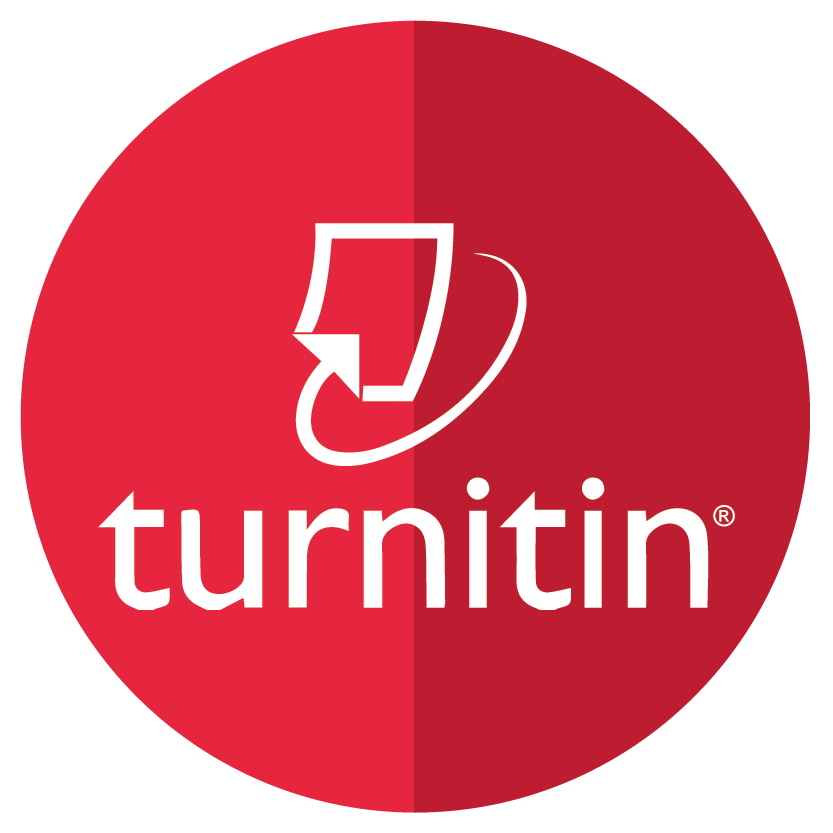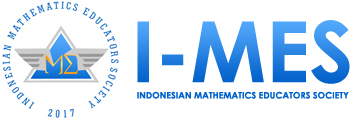LEARNER-SELF INTERACTION SISWA SEKOLAH DASAR DALAM MENYELESAIKAN SOAL MATEMATIKA TERBUKA
Abstract
Artikel ini membahas bagaimana kecenderungan Learner-Self Interaction (LSI) siswa SD dalam menyelesaikan soal matematika open-ended. Metode penelitian yang digunakan dalam artikel ini adalah deskriptif kualitatif dengan tahapan menyebarkan soal cerita, memantau proses pengerjaan soal; dan menganalisis hasil pekerjaan siswa. Adapun subjek penelitian terdiri dari seluruh siswa kelas IV sebanyak 14 orang. Hasil penelitian menunjukkan bahwa: (a) 8 dari 14 siswa mampu memenuhi komponen LSI pertama; (b) 2 siswa mampu memenuhi komponen LSI kedua; (c) 3 siswa mampu memenuhi komponen LSI ketiga. Berdasarkan bukti kualitatif yang dilaporkan dalam artikel ini, diketahui bagaimana kecenderungan antara siswa yang menggunakan Learner-Self Interaction dalam memecahkan soal matematika terbuka dan siswa yang tidak menggunakan Learner-Self Interaction dalam memecahkan soal matematika terbuka.
Full Text:
PDFReferences
Metzuyanim E H 2013 The co-construction of learning difficulties in mathematics-teacher-student interactions and their role in the development of a disabled mathematical identity Educational Studies in Mathematics 83(3) 341–368 Doi: 10.1007/s10649-012-9457-z
Fosse C, Gonzales A, Hoover L, & Oh E 2002 Interactions in the Real World: A Survey of Interactions I Government/Military, Higher Education and Corporate Distance Education (Indiana University, Instructional Systems Technology, Instructional Strategies for Distance Education)
Hackman J R & Morris C G 1975 Group Tasks, Group Interaction Process, And Group Performance Effectiveness: A Review And Proposed Integration Advances in Experimental Social Psychology 8 45–99 Doi: 10.1016/S0065-2601(08)60248-8
Yackel E, Cobb P, & Wood T 1991 Small-Group Interactions as a Source of Learning Opportunities in Second-Grade Mathematics JRME 22(5) 390–408
Alerby E 2003 During the break we have fun: A study concerning pupils experience of school Educational Research 45(1) 17–28 Doi: 10.1080/0013188032000086091
Hall, J K 2003 Classroom interaction and language learning (University of Georgia) Doi: 10.5007/2175-8026.2003n44p165
Chapman O 2004 Facilitating Peer Interactions in Learning Mathematics : Teachers Practical Knowledge Psychology of Mathematics Education 2 191-198
Smith G G & Olkun S 2005 Why interactivity works: Interactive priming of mental rotation Journal of Educational Computing Research 32(2) 93–111 Doi: 10.2190/4KA5-03UX-A70E-E53W
Clarke D & Xu L H 2008 Distinguishing between mathematics classrooms in Australia, China, Japan, Korea and the USA through the lens of the distribution of responsibility for knowledge generation: Public oral interactivity and mathematical orality ZDM-International Journal on Mathematics Education 40(6) 963–972 Doi: 10.1007/s11858-008-0129-5
Slavin R E 2008 Psikologi Pendidikan: Teori dan Praktik edisi ke 8 jilid 1 (Jakarta: PT Indeks)
Englehart J M 2009 Teacher–Student Interaction in International Handbook of Research on Teachers and Teaching 711-722 Springer US Doi: 10.1007/978-0-387-73317-3_44
Kauchak D & Eggen P 2010 Educational Psychology: Windows on Classrooms 8th ed (New Jersey Columbus Prentice Hall)
Liping M 2010 Knowing and teaching elementary mathematics 30(5) (Taylor & Francis e-Library American Educator) Doi: 10.2307/749776
Radford L 2011 Classroom Interaction: Why is it Good, Really? Educational Studies in Mathematics 76(1) 101–115 Doi: 10.1007/s
Hurst B, Wallace R, & Nixon S B 2013 The Impact of Social Interaction on Student Learning Reading Horizons 52(4) 375–398
Biswas D 2015 Impact of Classroom Interaction on English Language Learning and Teaching in Secondary Level of Bangladesh, Dhaka (April) 113
DÃez-Palomar J & Olivé J C 2015 Using Dialogic Talk to Teach Mathematics: The Case of Interactive Groups ZDM-International Journal on Mathematics Education 47(7) 1299–1312 Doi: 10.1007/s11858-015-0728-x
Song Y 2015 An Investigation Into Participation in Classroom Dialogue in Mainland China Cogent Education 90(1) Doi: 10.1080/2331186X.2015.1065571
Gokhale A A 1995 Collaborative Learning Enhances Critical Thinking Journal of Technology Education 7(1) 634–636 Doi: 10.21061/jte.v7i1.a.2
Shernoff D J, Csikszentmihalyi M, Schneider B & Shernoff E S 2014 Student Engagement in High School Classrooms from the Perspective of Flow Theory Applications of Flow in Human Development and Education 1-494 Doi: 10.1007/978-94-017-9094-9
Ronfeldt M, Farmer S O, McQueen K & Grissom J A 2015 Teacher Collaboration in Instructional Teams and Student Achievement American Educational Research Journal 52(3) 475–514 Doi: 10.3102/0002831215585562
Mattheos N & Lic O 2004 Information Technology and Interaction in Learning Studies of Applications in Academic Oral Health Education (Desertasi: Malmö University Sweden)
Chi M T H 2009 Active-Constructive-Interactive: A Conceptual Framework for Differentiating Learning Activities Topics in Cognitive Science 1(1) 73–105 Doi: 10.1111/j.1756-8765.2008.01005.x
DeJarnette A F & González G 2015 Positioning during Group Work on A Novel Task in Algebra II Journal for Research in Mathematics Education 46(4) 378–422 Doi: 10.5951/jresematheduc.46.4.0378
Van Patten B & Williams J 2014 Theories in second language acquisition: An introduction 1–293 (Taylor and Francis) Doi: 10.4324/9780203628942
Kyei-blankson L, Ntuli E & Donnelly H 2016 Establishing the Importance of Interaction and Presence to Student Learning in Online Environments World Journal of Educational Research 3(1) 48–65 Doi: 10.22158/wjer.v3n1p48
Juwah C 2006 Interactions in Online Education Implications for Theory and Practice (The Open and Flexible Learning Series) (Routledge Taylor & Francis Group) 1–273 ISBN: 0–203–00343–8
Su B, Bonk C J, Magjuka R J, Liu X & Lee S 2005 The Importance of Interaction in Web-Based Education: A Program-Level Case Study of Online MBA Courses Journal of Interactive Online Learning 4(1) 1–19
Hirumi A 2005 Analyzing and Designing e-Learning Interactions in Charles Juwah (Ed.) Interactions in online education implications for theory & practice 46-71 (New York: Routledge Publishing)
Northrup P 2002 Online Learner’s Preferences for Interaction The Quarterly review of Distance Education 3(2) 219–226
Hussin W N T W, Harun J & Shukor N A 2019 A Review on the Classification of Students’ Interaction in Online Social Collaborative Problem-based Learning Environment: How can we enhance the students’ online interaction? Universal Journal of Educational Research 7(9A) 125–134 Doi: 10.13189/ujer.2019.071615
DOI: https://doi.org/10.37058/jarme.v4i1.3835
Refbacks
- There are currently no refbacks.

This work is licensed under a Creative Commons Attribution-ShareAlike 4.0 International License.
Jurnal Penelitian Otentik Pendidikan Matematika (JARME)
Program Studi Pendidikan Matematika Universitas Siliwangi
Jl. Siliwangi no. 24 Kota Tasikmalaya - 46115
email: jarme@unsil.ac.id
e-ISSN: 2655-7762
Dilisensikan di bawah Lisensi Creative Commons Attribution 4.0 International
StatCounter: Detail
Diindeks oleh :


.jpg)
.jpg)



